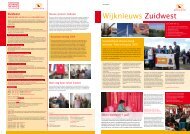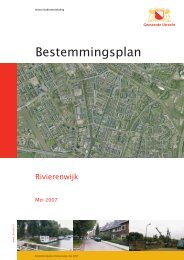freakonomics
freakonomics
freakonomics
Create successful ePaper yourself
Turn your PDF publications into a flip-book with our unique Google optimized e-Paper software.
Correlation is nothing more than a statistical term that indicates whether two variables<br />
move together. It tends to be cold outside when it snows; those two factors are positively<br />
correlated. Sunshine and rain, meanwhile, are negatively correlated. Easy enough—as<br />
long as there are only a couple of variables. But with a couple of hundred variables,<br />
things get harder. Regression analysis is the tool that enables an economist to sort out<br />
these huge piles of data. It does so by artificially holding constant every variable except<br />
the two he wishes to focus on, and then showing how those two co-vary.<br />
In a perfect world, an economist could run a controlled experiment just like a physicist or<br />
a biologist does: setting up two samples, randomly manipulating one of them, and<br />
measuring the effect. But an economist rarely has the luxury of such pure<br />
experimentation. (That’s why the school-choice lottery in Chicago was such a happy<br />
accident.) What an economist typically has is a data set with a great many variables, none<br />
of them randomly generated, some related and others not. From this jumble, he must<br />
determine which factors are correlated and which are not.<br />
In the case of the ECLS data, it might help to think of regression analysis as performing<br />
the following task: converting each of those twenty thousand schoolchildren into a sort of<br />
circuit board with an identical number of switches. Each switch represents a single<br />
category of the child’s data: his first-grade math score, his third-grade math score, his<br />
first-grade reading score, his third-grade reading score, his mother’s education level, his<br />
father’s income, the number of books in his home, the relative affluence of his<br />
neighborhood, and so on.<br />
Now a researcher is able to tease some insights from this very complicated set of data. He<br />
can line up all the children who share many characteristics—all the circuit boards that<br />
have their switches flipped the same direction—and then pinpoint the single<br />
characteristic they don’t share. This is how he isolates the true impact of that single<br />
switch on the sprawling circuit board. This is how the effect of that switch—and,<br />
eventually, of every switch—becomes manifest.<br />
Let’s say that we want to ask the ECLS data a fundamental question about parenting and<br />
education: does having a lot of books in your home lead your child to do well in school?<br />
Regression analysis can’t quite answer that question, but it can answer a subtly different<br />
one: does a child with a lot of books in his home tend to do better than a child with no<br />
books? The difference between the first and second questions is the difference between<br />
causality (question 1) and correlation (question 2). A regression analysis can demonstrate<br />
correlation, but it doesn’t prove cause. After all, there are several ways in which two<br />
variables can be correlated. X can cause Y; Y can cause X; or it may be that some other<br />
factor is causing both X and Y. A regression alone can’t tell you whether it snows<br />
because it’s cold, whether it’s cold because it snows, or if the two just happen to go<br />
together.<br />
The ECLS data do show, for instance, that a child with a lot of books in his home tends to<br />
test higher than a child with no books. So those factors are correlated, and that’s nice to<br />
know. But higher test scores are correlated with many other factors as well. If you simply









